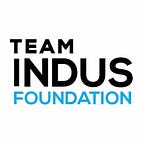From a lab in the Andes to a lab on the Moon
Team Killalab collected extremophile cyanobacteria from the farthest reaches of Peru for their experiment destined for the lunar surface
Lab2Moon winners from Peru, Team Killalab, answer our questions on how they collected their cyanobacteria samples from three distinct environments in the Andes mountains. After preparing their cultures, they are now conducting the analysis and testing. Here’s more from the team.
Where did you collect your samples and who went on the expedition?
The samples of cyanobacteria were obtained in explorations carried out in three different sites of Peru, characterized by high rates of UV radiation and extreme temperature fluctuations. The members of the scientific team are Sofía Rodriguez, Ruth Quispe and Rómulo Cruz. They selected the exploration sites and collected the biological samples.
The first sampling site was Lomas de Lucumo, located in Lima, where biofilms of cyanobacteria were collected from rocks. At the second site, the Pastoruri glacier, we collected cyanobacteria of the Nostoc genus from terrestrial substrate. The last sampling site was chosen in the high Andean lagoons in the department of Puno, located at 4,570 and 4,772 meters above sea level, where we obtained new samples of Nostoc sp., known as Cushuro, which has been consumed since ancient times for its high protein content, and is an excellent food source.
How did you identify the cyanobacteria?
While working with biological samples, we consider two types of identification:
- Morphological
- Molecular.
The morphological identification was made considering the external morphological characteristics (texture, coloration, size, appearance), the morphology at the level of optical microscopy and growth pattern. For identification of the species of the Nostoc strain, a series of taxonomic keys was used.
The molecular identification consisted of extracting the genomic DNA of the cyanobacteria and amplifying the rRNA 16S gene, followed by sequencing. Then the search on the GenBank database began. The molecular identification will provide us with more precision on the species of our cyanobacteria.
Describe the process you followed for collection and storage
The samples were collected using a sterilized spatula or spoon and placed in sterile flasks. Physical-chemical data were measured from the terrestrial substrate and from the lagoons from which they were collected, in addition to the environmental data.
The transport was carried out in a cooler maintaining a temperature of 4°C. Later, they were transported to the laboratory for treatment of the samples and stored in a freezer at a temperature of -10°C.
How did you culture the strains?
Samples were transferred to the laboratory (stones and plant material were discarded) and then washed with sterile distilled water to be placed in glass flasks with BG11 culture medium with continuous illumination. Once the growth was observed, it was corroborated by observation under a microscope. Subsequently, the culture was carried out in petri dishes containing solid BG11 medium, maintained at a photo-period of 12 hours of light and 12 hours of darkness.
Several isolations were made until we obtained pure colonies, free of fungi and other bacteria. Finally, the scaling of the pure strain was carried out, in order to obtain a higher biomass.
What kind of experiments are you conducting?
We have made the morphological identification and we are carrying out the molecular identification of our strains. We have carried out the analysis of the pigments present in our cyanobacteria.
We have also subjected it to tests of tolerance to desiccation. The Nostoc strain in the Puno region has emerged as the most resistant.
We are now designing survival tests for UV & ionizing radiation (gamma rays and protons) at the facilities of the Peruvian Institute of Nuclear Energy.
Conclusion
The results have been very interesting. The team can’t wait to test out their experiments on the lunar surface when the TeamIndus spacecrafts lands next year.
